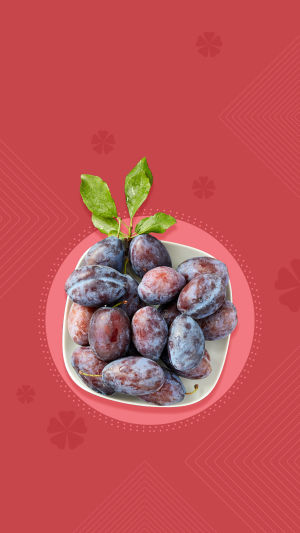The fact that we remember so many 'plums' has to do with the confusing naming of the many members of this genus of plums (Prunus) in the Rosaceae family.
The most common plum in our markets is the Chinese plum (Prunus salicina), a species of plum tree that has a very long history of cultivation in Asia, dating back as far as three thousand years.
A distant relative in Europe, the European plum (Prunus domestica) is also a fruit tree with a long history of cultivation, originally from Western Asia and the Caucasus, but later introduced by the Greeks and widely grown in Europe and America.
There are many cultivars of these plums, which come in a variety of shapes and colors. They are large, dark, and fleshy.
In English, a Plum is both a plum and a prune. Both are fruit trees of the genus Plum and Plumeria, with very few differences -One can easily mistake plum blossoms for plums in the mountains.
Some of the plums, sour plums, and all sorts of plum preserves come from real plum trees, while some are simply plums, such as "kayoko". The so-called "prunes" that are so popular nowadays are in fact also plums.
Under the genus Plum, there are the familiar apricots (subgenus Plum), peaches (subgenus Peach), and cherries (subgenus Cherry). They all share the same name, Drupe (commonly known as Stoned Fruits).
They are all different in size, color and shape, and taste, but they all have a hard "core".
This has to do with the way they develop. The flesh is actually the "pericarp" (mesocarp and exocarp), which develops from the ovary wall, and the ovules develop into the kernel, which is encased in a hard bead. The sulcus is where the ovary wall heals.
How do you eat plums? Fresh fruit of course. One bite and the sweet juice fills your mouth. Ripe plums are very sweet and of course not without a crisp, tart flavor, a fleeting and lingering taste of summer.
But in the past, when varieties of fruit trees were not modified, plums could be very sour. In order to enjoy the sweetness of plums without being sour, people came up with all sorts of ideas - to make them into desserts, to cook them, to make drinks, or to make them into a candied product.
The Plum Tart, for example, is a very simple and delicious dessert. The tart crust is filled with whipped egg, sugar, flour, and buttered custard, neatly arranged in circles of thinly sliced plums, and baked for about half an hour.
The plum tender tart is a French dessert. The ripe plums, the buttery tart crust, and the light and creamy sauce are a balanced combination, and the whole thing is lit up by the fruity scent of summer.
It is said that the most famous plum tart is made by Alice Waters, an Englishwoman who opened a restaurant in Berkeley, California, USA, and whose restaurant, Chez Panisse, is one of the originators of the 'slow food movement.
After a slow French meal, a sweet and sour dessert is a lovely way to end the day.





